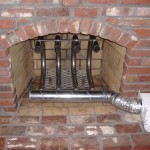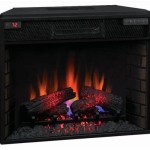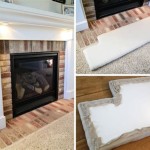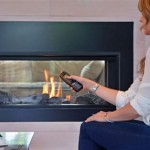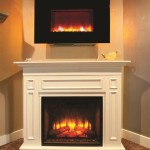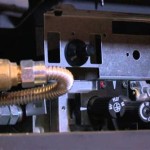Valor Fireplace Inserts Reviews: A Comprehensive Guide
Valor fireplace inserts are renowned for their efficiency, elegant design, and reliable performance, making them a popular choice for homeowners seeking to upgrade existing fireplaces or add supplemental heating to their living spaces. This article aims to provide a comprehensive overview of Valor fireplace inserts, delving into their key features, benefits, model variations, and considerations for prospective buyers. Understanding these aspects will enable consumers to make informed decisions about selecting the ideal Valor insert for their specific needs and preferences.
Valor, as a brand, has cultivated a strong reputation for creating high-quality gas fireplaces. They meticulously engineer their products to maximize heat output while minimizing energy consumption. Moreover, they are committed to providing a visually appealing product that integrates seamlessly into various home décors, ranging from traditional to contemporary styles. The longevity of Valor inserts is another key selling point, allowing homeowners to enjoy reliable warmth for years to come.
Key Features and Technologies of Valor Fireplace Inserts
Several features distinguish Valor fireplace inserts from other brands on the market. One notable aspect is their use of radiant heat technology. Unlike forced-air systems that circulate warm air using a fan, Valor inserts primarily emit radiant heat. This type of heat warms objects and people directly, resulting in a more even and comfortable heat distribution throughout the room. Radiant heat is often perceived as a more natural and less drafty heat source, contributing to enhanced comfort levels.
Another vital feature is the emphasis on zonal heating capabilities. Valor inserts are designed to efficiently heat specific areas of a home, such as living rooms or family rooms, without requiring the entire central heating system to operate. This approach can lead to significant energy savings, especially during shoulder seasons when only supplementary heat is needed. By focusing heat on frequently used spaces, homeowners can reduce their overall heating costs and minimize their environmental impact.
Many Valor models incorporate programmable thermostats and remote controls, providing convenient control over temperature settings and operation. These features allow users to easily adjust the heat output to suit their individual comfort levels and schedule the fireplace to turn on or off at specific times. The integration of advanced controls enhances user convenience and allows for optimized energy efficiency. Smart home integration is also becoming increasingly common, allowing for control via smartphone apps and voice assistants.
Valor also prioritizes safety in its fireplace insert designs. Features like oxygen depletion sensors (ODS) automatically shut off the gas supply if oxygen levels in the room become dangerously low. This critical safety mechanism prevents the buildup of harmful carbon monoxide, ensuring the well-being of occupants. Pilot lights are also often enclosed and shielded to reduce the risk of accidental ignition or tampering. Detailed safety guides and installation instructions accompany each unit, promoting responsible usage.
The aesthetics of Valor inserts are also a key consideration. They offer a wide range of design options, including different firebox liners, fuel beds (logs, glass, or rocks), and surround styles. This allows homeowners to customize the appearance of their fireplace insert to complement their existing décor. The attention to detail in the design and craftsmanship of Valor inserts contributes to their overall appeal and makes them a desirable addition to any home.
Exploring Different Valor Fireplace Insert Models
Valor offers a diverse selection of fireplace insert models, each designed to cater to specific needs and preferences. Models vary in terms of size, heat output, fuel type (natural gas or propane), and design features. A thorough understanding of these differences is crucial for selecting the most appropriate model for a particular application.
Smaller Valor inserts are often ideal for bedrooms, studies, or other smaller rooms where supplemental heat is desired. These models typically have lower BTU outputs and are designed to provide localized warmth without overheating the space. Their compact size makes them suitable for installation in existing fireplaces with limited clearances.
Mid-sized Valor inserts are commonly used in living rooms, family rooms, and other medium-sized spaces. These models offer a balance of heat output and energy efficiency, making them suitable for providing primary or supplemental heating to these areas. They often feature a wider range of design options and control features compared to smaller models.
Larger Valor inserts are designed for larger, open-concept spaces or homes with poor insulation. These models have higher BTU outputs and are capable of providing significant heat to a substantial area. They are often equipped with more advanced control features and may require professional installation due to their size and complexity.
Different models also offer diverse venting options. Direct vent models draw combustion air from outside the home and vent exhaust gases directly outside, preventing the depletion of indoor air and ensuring safe operation. B-vent models utilize existing chimneys for venting, but they are generally less energy-efficient and require more careful installation to prevent backdrafting. Vent-free models do not require any venting, but their use is restricted in some areas due to potential concerns about indoor air quality. It's important to adhere to local building codes and regulations regarding venting requirements.
Fuel bed options are another significant differentiator between Valor models. Some models feature realistic-looking ceramic fiber logs that mimic the appearance of a traditional wood-burning fireplace. Others offer contemporary glass or rock fuel beds that create a more modern aesthetic. The choice of fuel bed is largely a matter of personal preference and should be considered in conjunction with the overall design of the room.
Considerations Before Purchasing a Valor Fireplace Insert
Before purchasing a Valor fireplace insert, several factors should be carefully considered to ensure a successful installation and long-term satisfaction. These considerations include measuring the existing fireplace opening, determining the appropriate BTU output, selecting the correct venting system, assessing the availability of gas or propane, and budgeting for installation costs.
Accurate measurements of the existing fireplace opening are crucial for ensuring that the Valor insert will fit properly. The insert should be slightly smaller than the opening to allow for proper clearances and ventilation. Consult the manufacturer's specifications for detailed dimension requirements. Failure to accurately measure the opening can result in costly installation delays or the need to return the insert.
Determining the appropriate BTU output for the space to be heated is also essential. A BTU (British Thermal Unit) is a measure of heat energy. The required BTU output will depend on the size of the room, the insulation levels, the climate, and the desired temperature. A general rule of thumb is to calculate approximately 20 BTU per square foot of living space, but this can vary depending on the specific circumstances. Consulting with a qualified HVAC professional or fireplace retailer can help determine the optimal BTU output for a given application.
Selecting the correct venting system is crucial for safe and efficient operation. Direct vent systems are generally preferred due to their superior energy efficiency and safety characteristics. However, B-vent systems may be more suitable for installations where an existing chimney is already in place. Vent-free systems should be carefully evaluated to ensure compliance with local building codes and regulations. Professional installation is strongly recommended for all venting systems to minimize the risk of carbon monoxide leaks.
Assessing the availability of natural gas or propane is another important consideration. Valor inserts are available in both natural gas and propane models. If natural gas is available at the property, it is typically the more economical option. However, if natural gas is not available, propane can be used as an alternative. A propane tank will need to be installed, which may require additional permits and site preparation.
Budgeting for installation costs is also essential. Installation costs can vary depending on the complexity of the installation, the venting system required, and the labor rates in the local area. Professional installation is highly recommended to ensure safe and proper operation. Obtain multiple quotes from qualified installers to compare prices and ensure that you are getting a fair deal. Some retailers may offer installation services as part of the purchase price.
Finally, it is important to check for any applicable rebates or incentives before purchasing a Valor fireplace insert. Many utility companies and government agencies offer rebates for energy-efficient appliances, including gas fireplaces. These rebates can significantly reduce the overall cost of the insert and make it a more attractive investment. Check with your local utility company or government agency for details on available rebates and incentives.

Valor G3 5 Gas Fireplace Insert Fergus

Valor Fireplaces Medium G3 Gas Insert Hearth Appliances

Valor 530 Portrait Series Gas Fireplace Chadwicks S

Valor Fireplaces Toronto S Fireplace

Valor Fireplaces Toronto S Fireplace

Valor Ge3 27 Electric Fireplace Insert Chadwicks S

Best Valor Fireplaces Reviews 2024 Ultimate Round Up Hvac Training 101

Valor Fireplaces Medium G3 Gas Insert Hearth Appliances

Valor H5 Gas Fireplace Bob S Intelligent Heating Decor

Valor Legend G3 Series The Fireplace King Huntsville Ontario Muskoka For Your Heating Cooling And Grilling Needs

